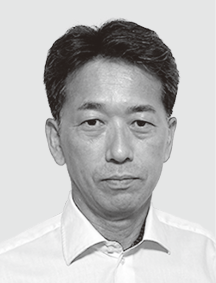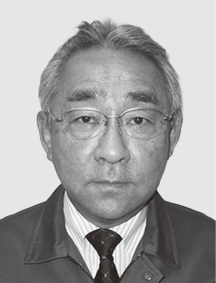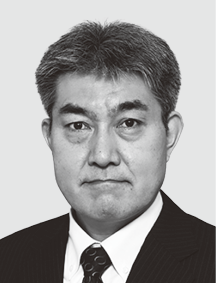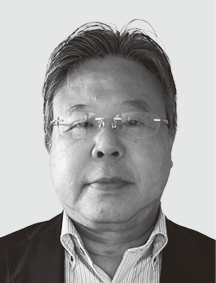As it strives to play its part in creating a circular economy, Hitachi is taking action on overcoming resource problems by seeking to use recycled materials and pursue resource-efficiency and longer product life in its “arteries” (the outbound processes of production and sales), and to utilize reuse, remanufacturing, and other ways of turning used goods back into useful materials in its “veins” (the inbound processes of recovery and recycling). The importance of recycling resources is being brought into increasingly sharp focus by factors such as the acquisition of raw materials becoming more difficult than ever over recent years amid rising geopolitical risks. Recycling represents one way to address resource problems and this article reports on what is being done in this area in terms of both “arteries” and “veins.” As Hitachi is looking at the use of digital technology to improve the efficiency of how this recycling is done, the article also presents a vision for the future that forms part of this work.





Marine plastics are one of the environmental problems that have attracted attention in recent years. Reports have described how plastic waste such as disposable shopping bags or packaging that has washed into the ocean is causing marine pollution and impacting plants and marine organisms. The problem is recognized as serious enough for it to be raised at forums such as the G7 and G20. While plastic is a vital material for modern society, action needs to be taken to enable coexistence with nature. Moves to address the problem of plastic pollution in Japan include the Osaka Blue Ocean Vision that seeks to reduce new marine pollution to zero and action by government in the form of the enactment of the Plastic Resource Circulation Act. Major changes are also taking place in the area of resources, with materials procurement becoming increasingly difficult for reasons that include the recent rise in geopolitical risk and commodity price inflation along with increased consumption driven by global economic development and population growth (see Figure 1)(1). With the passing in 2022 of the Economic Security Promotion Act, which incorporates measures for securing the supply chain for key materials such as rare earth metals and semiconductors that are essential to manufacturing, resource recycling is becoming increasingly important.
As the main use of plastics at Hitachi is in home appliances, efforts to close the loop through existing home appliance recycling schemes are gradually getting underway. For other products, Hitachi has also started looking at a circular economy model for economically viable resource recycling that is compatible with the nature of the products and how they are used, coming at this from the perspectives of recycling, remanufacturing, rebuilding, and repairing or extending product life (see Figure 2).
This article looks at how Hitachi has been developing technologies for recycling since the early days of its involvement in recycling (early 1990s), describing what has been happening in this area right through to its more recent recycling business operations.
Figure 1 — Production Volume and Price Trends for Key Minerals The price of copper and aluminum is at historic highs, while that of nickel is at its highest since 2007. While a short-term drop in production happened across the board in 2020 and 2021 due to COVID-19 among other things, this was against a backdrop of years of ongoing increases in the production of mined resources.
The price of copper and aluminum is at historic highs, while that of nickel is at its highest since 2007. While a short-term drop in production happened across the board in 2020 and 2021 due to COVID-19 among other things, this was against a backdrop of years of ongoing increases in the production of mined resources.
The high efficiency with which it can recover fluorocarbon from refrigerator insulation is a feature of the process developed by Hitachi(2). Before applying this process, the coolant fluorocarbon is first extracted and the compressor and other metal parts detached before the remains of the refrigerator are crushed. Crushing efficiently separates the urethane foam stuck to the steel sheet that makes up the outer wall of the refrigerator. A special-purpose wind force separator then selectively sucks up the pieces of urethane from among the crushed fragments and transports them to a pulverizing mill where they are ground down into porous foams (0.3 mm). The gaseous fluorocarbon that degasses from the foams is drawn in from the crusher and pulverizing mill along with air and supplied to an activated carbon adsorption system where the fluorocarbon is recovered by adsorption and desorption. The basic process was patented and it went on to become a de facto standard for home appliance recycling in Japan, including washing machines and air conditioners.
Hitachi subsequently drew on the knowledge it had built up through this work to establish home appliance recycling businesses in Tochigi Prefecture, Hokkaido, and Tokyo in 1999. These companies are described below.
Figure 3 — System for Disassembling Glass Refrigerator Doors (Principle of Operation) Inserting the separating tool from where the glass panel is attached and doing so at exactly the right position minimizes cracking of the glass and safely releases it without breaking.
Inserting the separating tool from where the glass panel is attached and doing so at exactly the right position minimizes cracking of the glass and safely releases it without breaking.
The operations of Kanto Eco Recycle Co., Ltd. are located in a refrigerator factory at Tochigi Works of Hitachi Global Life Solutions, Inc. (Hitachi GLS), a site primarily dedicated to the development and manufacture of these appliances. Recently, the company has been looking at how to recycle refrigerators with glass doors. Figure 3 shows a machine for disassembling glass-door refrigerators that was jointly developed by Hitachi and Hitachi GLS(3). The machine uses an insert-and-cut mechanism to automatically separate the glass panel from the front of the door in a way that avoids breaking the glass. Separating and recovering the glass this way is safer and more efficient than doing the same task manually. Prompted by the growing popularity of glass-door refrigerators over recent years, this work was done in partnership with Hitachi GLS in anticipation of future needs. The machine is currently undergoing further improvements at Kanto Eco Recycle to increase its efficiency.
Figure 4 — RPF Made from Refrigerator Insulation (Urethane) Urethane waste with a density of about 30 kg/m3 (bulk specific gravity of approximately 0.03 g/cm3) (indicated by the dotted line in the figure) is turned into valuable solid fuel by compressing it to about 500 kg/m3 (bulk specific gravity of approximately 0.5 g/cm3) (indicated by the solid line in the figure).
Urethane waste with a density of about 30 kg/m3 (bulk specific gravity of approximately 0.03 g/cm3) (indicated by the dotted line in the figure) is turned into valuable solid fuel by compressing it to about 500 kg/m3 (bulk specific gravity of approximately 0.5 g/cm3) (indicated by the solid line in the figure).
Hokkaido Eco Recycle Systems Co., Ltd. was established in partnership with Mitsubishi Materials Corporation, a major producer of non-ferrous metals. It is located at an industrial complex in Tomakomai City, Hokkaido. The company was established as part of an eco-town project with support from Hokkaido and the former Ministry of International Trade and Industry. A feature of the operation is that it makes solid fuel by pelletizing urethane that was previously disposed of as waste. This is done in the system for recovering fluorocarbons from insulation by a refuse-derived paper and plastics densified fuel (RPF) machine installed in 2015 that further compresses the urethane fragments (by a factor of more than 20) (see Figure 4). As the system also collects the small amounts of freon gas that escape during the compression process, it is among the top performers in the industry in terms of how much fluorocarbon it recovers from the insulation. The site also recycles automated teller machines (ATMs) and other Hitachi IT equipment. The recycling of ATMs covers more than just materials, also including the reuse of parts through an information-sharing arrangement with the manufacturer (Hitachi Channel Solutions, Corporation).
Tokyo Eco Recycle Co., Ltd. is located in Koto City, Tokyo. It was established in partnership with Ariake Kougyo Co., Ltd., a company at the forefront of a model project for recycling fluorocarbon coolant from refrigerators being run at the time by the Association for Electric Home Appliances.
A feature of its plant is that it draws on work done by a demonstration project run by the New Energy and Industrial Technology Development Organization (NEDO) and other agencies from 1992, and by a model project for home appliance recycling run by the Association for Electric Home Appliances and others from 1995(4). The company also uses technology jointly developed by Hitachi to recover the rare earth metals contained in air conditioners, enabling the waste-free supply of these materials to producers such as Hitachi Metals, Ltd.(5) It recycles a range of devices, including medical equipment and smartphones, from other vendors as well as from Hitachi. For smartphones, the company is working with Hitachi on the joint development of equipment for automatically detaching the liquid crystal display (LCD) screen prior to recycling and the subsequent safe and efficient removal of the exposed battery.
While these three companies each have their own distinctive characteristics, the philosophy they all have in common is one of embarking on recycling based on a circular economy model in which materials are recycled from “veins” (used products) to “arteries” (new products). In this case, this involves supplying plastic materials to Hitachi GLS via plastics companies such as Hitachi Appliances Techno Service, Ltd.
Figure 5 — Internal Structure of Air Compressor (Example) Compressed air is produced by the main motor and air end working together. Efficiency can be improved by using an inverter to control the motor speed.
Compressed air is produced by the main motor and air end working together. Efficiency can be improved by using an inverter to control the motor speed.
Figure 6 — Air End Rebuild Process The units are refurbished in a process that includes disassembly and cleaning, after which performance testing is performed.
The units are refurbished in a process that includes disassembly and cleaning, after which performance testing is performed.
Hitachi Industrial Equipment Systems Co., Ltd. is working to implement recycling in the industrial equipment sector. Carrying on the tradition of electric motor manufacturing, the business in which Hitachi got its start, the company manufactures products such as air compressors, pumps, and transformers, also supplying a wide range of machinery, services, and solutions for applications that extend from industry to infrastructure. The rebuilding of air compressors was one such initiative launched as part of the service business. Figure 5 shows the internal structure of an air compressor.
The heart of an air compressor is the air end (the part where the actual compression takes place). While these are designed for durability to enable 24-hour/365-day operation, friction and other forms of wear on certain parts means that regular maintenance is needed. Proper maintenance of the air end prevents operational problems. The difficulty, however, is that onsite maintenance work can interfere with plant productivity. Figure 6 shows how this maintenance work is done, including disassembly, cleaning, and the recovery of worn parts.
The plant downtime associated with a rebuild can be significantly reduced by swapping the air end in the plant with another rebuilt air end of the same model and type.
This is an example of rebuilding based on the circular economy model in which parts are recovered to minimize the use of raw materials. This reduction in new material use decreases both costs and carbon dioxide (CO2) emissions (from 63% to 77% and 60% to 64% respectively, compared to a new compressor).
The air end rebuilding business was launched in 1985. With the recent prominence of environment, social, and governance (ESG) business practices, however, the proportion of domestic air end replacements that use rebuilt units now exceeds 95%.
This work also extends overseas. Hitachi Industrial Equipment Systems operates an integrated business for the manufacture and sale of air compressors, with partnerships for combining information and operational technology (IT and OT) that include Sullair US Purchaser, Inc., a company acquired by Hitachi in 2017. The compressor product range supplied by Sullair US Purchaser is made up of portable models for outdoor use, such as at mines where no electric power supply is available, with most being suitable for remanufacturing under the circular economy model. As these portable compressors are used at outdoor locations with no power supply, they are equipped with an engine. The engine, air end, and other major components are overhauled in a process that includes disassembly and cleaning and the recovered compressors are then sold as remanufactured products. Sales of these remanufactured products exceeded those of new models, accounting for 59% of sales of the company’s main product lines in 2020 and 2021. Hitachi Industrial Equipment Systems recognizes the importance of resource circularity both in Japan and overseas and is looking at extending the circular economy model to other products.
Hitachi Industrial Equipment Systems also offers extensive life cycle management (LCM) services targeted at improving the operation and maintenance of the plant and equipment(6). Utilizing cloud-based management and an extensive range of maintenance options, these services make the maintenance of industrial equipment simpler and more efficient while also reducing labor requirements. These LCM services are now being made available for air compressors, helping to prevent compressor faults by letting customers know when it is best to perform repairs once they are in use. This reduces problems cause by poor maintenance. Cloud monitoring can also significantly reduce downtime by providing early warning of problems so that timely action can be taken.
Hitachi believes that expanding these LCM services will play a part in the circular economy model of repairing products and extending their life.
Hitachi is taking action to recycle waste plastic in areas outside home appliances. This includes supplying technologies such as image recognition together with a degree of automation to the sorting lines, often run by local government, that process used polyethylene terephthalate (PET) plastic bottles. While normal practice with PET bottles is to crush them as-is and recycle the materials, the frequent presence of other materials such as polypropylene bottlecaps and polystyrene labels means that recyclers typically separate these beforehand by means of a picking process. The automatic sorting machine for used PET bottles automates this sequence of steps, with the system having been developed by Hitachi Industrial Equipment Systems using image recognition from Hitachi Solutions, Ltd. The latter uses deep learning to recognize bottlecaps and a technique based on the hue saturation value (HSV) color scale to determine whether bottles have a label. The artificial intelligence (AI) models used for bottlecap and label recognition are each implemented as separate processes so as to speed up processing by running them in parallel (see Figure 7). Recognition operates in tandem with a picking process, the automation of which requires special knowhow relating to high-speed object tracking and how to grasp irregular objects. So equipped, the system is able to match the judgement and sorting abilities of a human worker, measuring the total surface area of PET bottles and using this to calculate their area centroid, and then utilizing the pulses output by the encoder (a device for detecting position, direction, and orientation) on the belt conveyor to provide the XY coordinates required for robot movement control.
These techniques are seen as a way to remove foreign material from the continuous stream of crushed fragments and Hitachi is looking at utilizing them in applications such as home appliance recycling facilities struggling with labor shortages.
Figure 7 — Image Recognition Using Deep Learning and HSV Color Scale The HSV color scale technique represents color in terms of three parameters: hue, saturation, and value (brightness). The HSV color scale is more closely aligned with how humans perceive color.
The HSV color scale technique represents color in terms of three parameters: hue, saturation, and value (brightness). The HSV color scale is more closely aligned with how humans perceive color.
An urgent task for the world is to make the transition away from the era of heavy resource consumption that characterized Society 3.0 and Society 4.0 and toward Society 5.0 and a low-carbon circular economy that makes heavy use of data.
The use of digital technology to track the one-way process whereby products are manufactured from raw materials before being sold, consumed, and ultimately disposed of can shed light on where terrestrial resources (including raw materials and parts) are currently located. While showing where these resources are to be found will bring us closer to a modern circular economy, no single company can overcome this challenge on its own and there is an important role to be played also by the “vein” industries that return those resources to the “arteries.”
In the future, Hitachi intends to continue bringing digital and green technologies together as it seeks to achieve “Partnerships for the Goals,” Goal 17 of the Sustainable Development Goals (SDGs).
Aspects of the work described in this article were recognized by the Ministry of Economy, Trade and Industry (METI) Minister’s Award at the 2019 Resources Recirculation Technologies and Systems Awards. The authors would like to take this opportunity to express their deepest gratitude to the many people involved at the Japan Environmental Management Association for Industry and elsewhere.